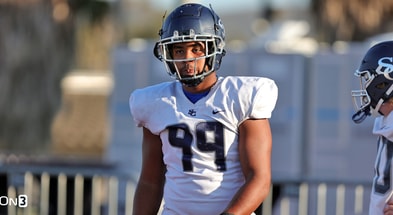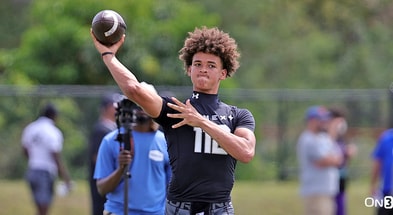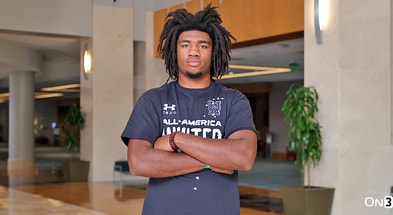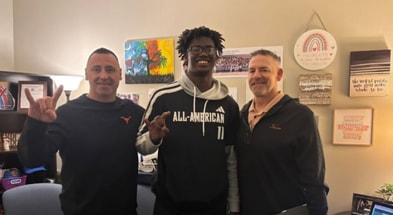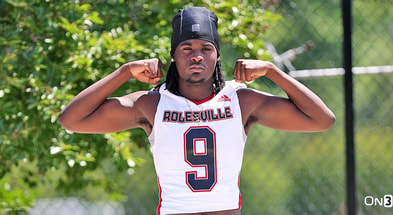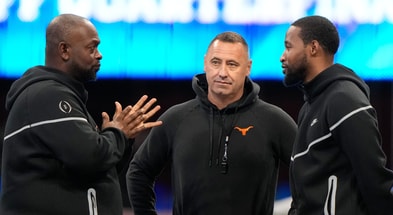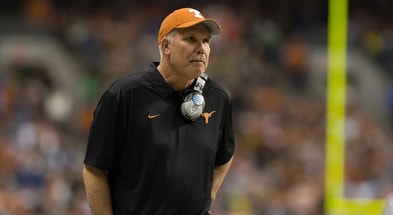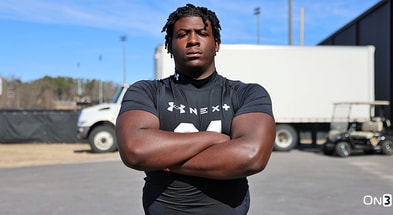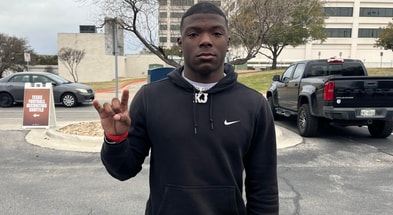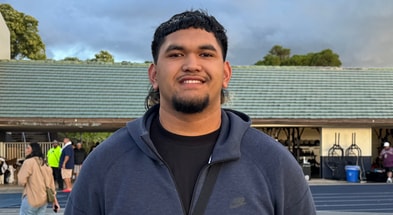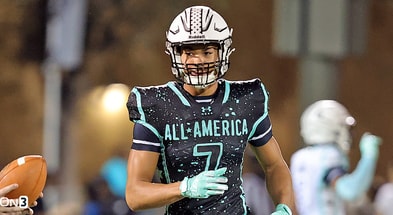The Economics of NIL: How Texas Football Builds an Elite Offense

Recruiting class composition is far more intricate than most fans realize. Several variables come into play, with supply and demand being the most fundamental. It has always worked this way, but since the legalization of NIL in 2021, Texas has become a more active participant.
[BOOKMARK: Check Inside Texas daily for FREE Texas Longhorns content]
We’re talking market economics.
Fans of schools that recruit at an elite level have a certain expectation: every recruit should be at least a four-star prospect. That’s the network effect, but it’s artificial.
The real market is determined by schools, agents, and occasionally an overinvolved uncle who’s on his way to irrelevance.
The true determinant is simple: how rare is the prospect, and how badly does my school need him? Again, supply and demand.
Quarterbacks
There are no cheap quarterbacks worth having—there are only affordable ones. You might get somebody to sign relatively cheap, but if he’s about to be the starter for a top-25 team, it’s going to cost.
Texas has Arch Manning, Trey Owens, and KJ Lacey on the roster. Dia Bell is committed in the 2026 class.
[Apropos of nothing, I think Arch and Dia have similar skillsets]
An expensive room, but potentially a program-defining room—and I don’t just mean the notable bookends.
Running Back
College isn’t the NFL. College running backs would feature more numerously in a college draft.
Running backs totally dominate Pop Warner while quarterbacks are growing into their noodle arms. Running backs still dominate in high school while quarterback arms are al dente. Running backs, still in fairly large numbers, can dominate in college. In the pros, however, running backs are much more fungible.
Texas has a nice mix of good and potentially dominant talents on the roster, and, after the 2025 recruiting cycle, is on a dominant 2026 recruiting cycle.
Tight End
I have no concept of the tight end market. The only two truly talented tight ends I can recall transferring in recent years are Max Klare and Jalin Conyers. You could say Eli Stowers, but he doesn’t really count—he was a quarterback up until he transferred to Vanderbilt.
[Apropos of something, I told Aggie fans tight end might be in his future. Ha ha ha ha! Funny story: I recall telling my friend, who was an OC in the Big 12 at the time, that he should push for Stowers because he’d be a great tight end if quarterback didn’t work out and he agreed]
This is an ‘evaluation’ position. Tight ends don’t have to be a freak athlete to be a good player. Average blockers who can somewhat catch, or good receivers who can somewhat block, just need to be available.
The absence of studs is telling of their value.
Wide Receiver
One elite receiver is nearly as valuable as a quarterback. Ian Boyd would say a receiver is more valuable, but I’d argue against that because the quarterback is tasked with extracting the most value out of five receiving threats rather than one threat who would thrive with average QB throwing him jump balls.
They’re not all individual unicorns like Jeremiah Smith, aka, that one really expensive receiver. Keeping Carnell Tate wasn’t cheap either, I’m sure.
Texas is in a similar boat.
Coming out of high school, Ryan Wingo was sought after nearly as much as Smith. While Smith is a current elite player, I’m convinced Wingo is a future elite player. Therein lies the rub. Texas did not get elite production out of Wingo in his first year, though there were numerous tantalizing glimpses and I’m certainly not blaming him. Good lord, just throw him five slants a game!
Top 10
- 1New
Amir Khan
Viral manager to the portal
- 2
Rodney Terry
Texas' next step, favorite
- 3
Nate Oats
Reacts to Will Wade handling of NC State
- 4Hot
CBS announcer
Rips officials in St. John's, Arkansas
- 5Trending
Tip times announced
Sunday NCAA games times, TV revealed
Get the On3 Top 10 to your inbox every morning
By clicking "Subscribe to Newsletter", I agree to On3's Privacy Notice, Terms, and use of my personal information described therein.
Elite receivers come with expensive carrying costs. The portal is great because you can get a difference-maker at a below-market rate. A difference-maker out of high school is expensive and comes equipped with those multi-year carrying costs.
This is nothing against Wingo. Anyone who has read IT since well before he took the field knows I view him as a future first-rounder. It’s nothing against Kaliq Lockett or Jaime Ffrench—it’s simply about the economics of the position. Adonai Mitchell, Matthew Golden, and Spring Portal Man make my case as to the value of the portal. One hitter quitter.
You can’t live by the portal, but you can find a number-one receiver in the portal, pay him a certain amount, and probably get more out of him in one year than you can in two years at a higher aggregate cost.
Offensive Line
As it relates to NIL, this position is the most interesting to me. Let’s say the goal is to keep 17 players in the room—that’s 68 years of eligibility, but an even higher number, or carrying cost (or opportunity cost if you really want to get in the weeds), when considering redshirts. Being offensive linemen, most only play extensively in how many years? We can probably halve 68, right? But a lot transfer before they ever play a down as well.
Kelvin Banks and Jake Majors aren’t the norm—best expressed by Banks starting day one at left tackle and Majors breaking UT’s all-time games started record.
That’s a ton of bodies to have tied up when there is so much longterm developmental risk. The bright side is your 10th-17th offensive linemen typically come with much less investment—unless you made a very bad and expensive evaluation.
This all ties into what I wrote about during the Michael Fasusi recruitment. Theoretically, if the staff’s assumption in May 2024 was that the starting tackle duo in 2025 would be Trevor Goosby and Cameron Williams, with Brandon Baker as number three, how much financial sense would it make to push hard for five-star Fasusi? That would be a ton of money to have sitting on the bench. And not just Fasusi, but also Baker, who might play or might not in 2025.
Now we know Fasusi is at Oklahoma. Let me pause here… who let him sign? That’s malfeasance. Oklahoma is teetering, and it’s visible to everyone. Nobody needs a 90-foot level to see the Tower of Pisa is leaning.
Texas should mix in more portal recruiting at the position, especially for more full-grown interior players. This would allow them to carry less at the position.
Due to scarcity, you’ll have to overpay for a starting tackle in the portal, so that’s definitely not the play. The play is to cycle it correctly during high school recruiting, which is what we’re seeing now. Or, at least that’s the goal in the 2026 recruiting class.
[Join Inside Texas TODAY for just ONE DOLLAR PER WEEK!]
And that’s recruiting economics.

